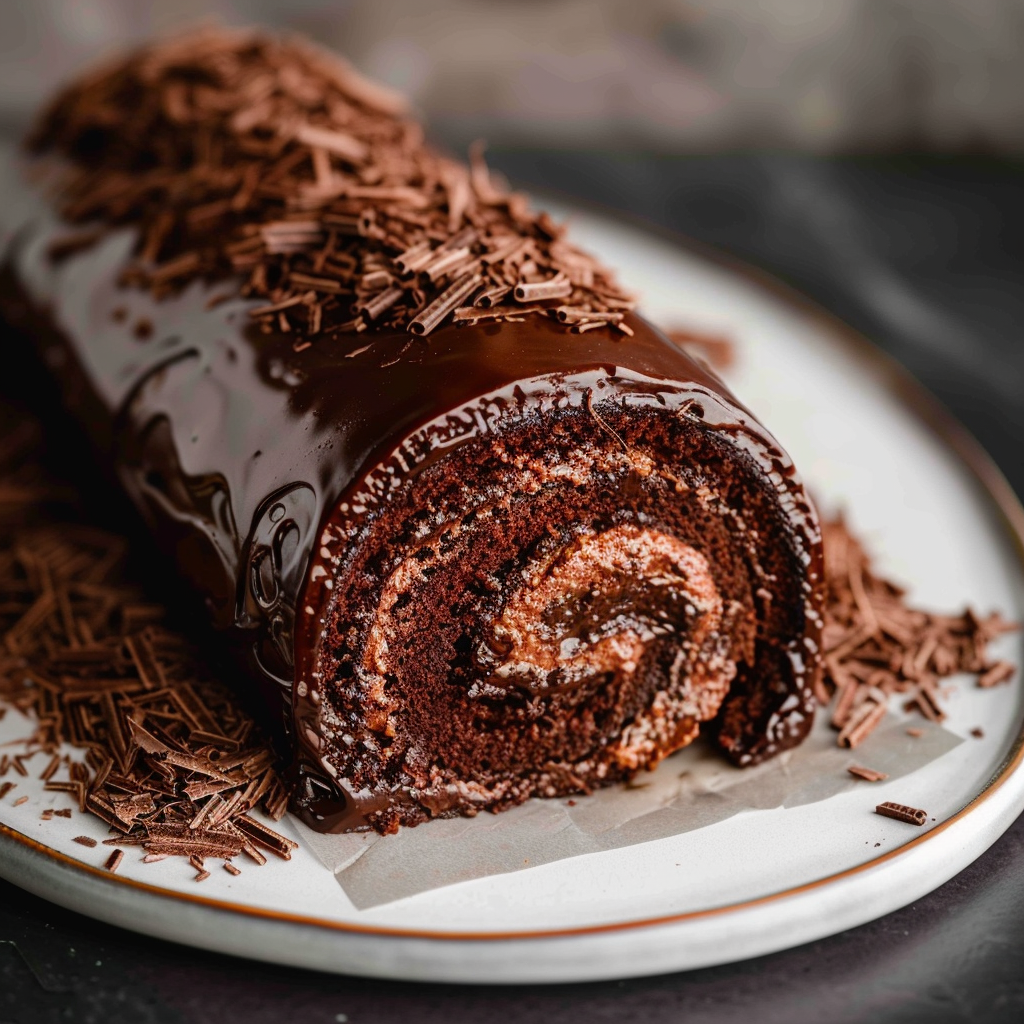The History and Global Appeal of Swiss Rolls
Delve into the origins of the Swiss roll, dispelling the myth that it originated in Switzerland and tracing its roots back to Central Europe. Discuss how variations of the roll cake have become beloved desserts around the world, from the Japanese roll cake to the British jam roll. This section could explore the evolution of the Swiss roll into a chocolate version, emphasizing the universal love for chocolate.
Ingredients Deep Dive
Cake Components
- Eggs: Explain the role of eggs in providing structure and aeration to the cake, and why room temperature eggs are crucial for achieving maximum volume.
- Granulated Sugar: Discuss how sugar not only sweetens the cake but also contributes to its moist texture.
- Unsweetened Cocoa Powder: Highlight the importance of unsweetened cocoa powder for its rich chocolate flavor without additional sugar.
- All-purpose Flour: Explain the choice of all-purpose flour for its balance of gluten, which gives the cake enough structure without making it too tough.
- Baking Powder and Salt: Clarify the roles of these ingredients in leavening and flavor enhancement.
Filling Components
- Heavy Cream: Discuss the choice of heavy cream for its high fat content, essential for creating a stable whipped cream.
- Powdered Sugar: Explain the dual role of powdered sugar in sweetening and stabilizing the whipped cream.
- Vanilla Extract: Highlight how vanilla adds depth to the cream’s flavor.
Step-by-Step Process
Break down the recipe instructions into detailed steps, providing additional tips and insights at each stage:
- Preparation: Emphasize the importance of preheating the oven and properly preparing the pan to ensure the cake does not stick.
- Making the Batter: Offer tips on achieving the right consistency and volume when whisking eggs and sugar. Discuss the technique of sifting dry ingredients to avoid lumps in the batter.
- Baking: Provide guidance on how to know when the cake is perfectly baked, including visual cues and texture.
- Rolling and Cooling: Explain the technique of rolling the cake while it’s warm to prevent cracking. Discuss the cooling process’s role in setting the cake’s shape.
- Filling and Finishing: Offer advice on whipping cream to the right stiffness and spreading the filling evenly for a perfect roll.
Troubleshooting Common Issues
Address common problems bakers might encounter, such as the cake cracking during rolling, the filling being too runny, or the cake drying out. Provide solutions and tips for each issue.
Variations and Customizations
Suggest variations on the basic recipe, such as adding espresso powder to the cake batter for a mocha flavor, incorporating fruit fillings, or experimenting with different frosting techniques for decoration.
Presentation and Serving Suggestions
Discuss creative ways to serve and present the chocolate Swiss roll, including garnish ideas like powdered sugar, chocolate shavings, or fresh berries. Suggest occasions for which the Swiss roll is particularly suited, from afternoon tea to elegant dinner parties.
Nutritional Information and Dietary Adaptations
Provide a brief analysis of the nutritional content of the Swiss roll, discussing its caloric density and suggesting modifications for those with dietary restrictions, such as using gluten-free flour or alternative sweeteners.
Conclusion
Conclude the article by reiterating the joy of baking and sharing a chocolate Swiss roll, encouraging readers to try making it themselves and to experiment with their own variations.
